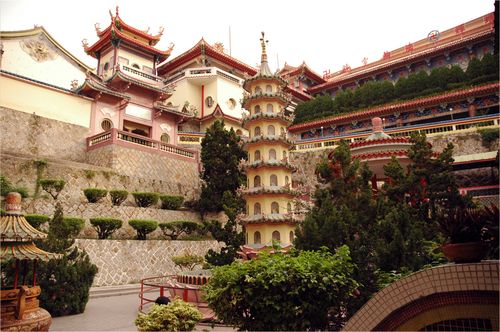|
|

Petronas Twin Towers at Kuala Lumpur |
|
Malaysia is perhaps the sole country that wraps up the pan-Asian cultures and its sensibilities at one go. From the rare glimpse of the tender Orang Utan to the profusion and diversity of flowers and orchids, this Southeast Asian country has every aspects of nature possessively preserved in its backyard. Kuala Lumpur is the official capital and the largest city in Malaysia. However, in the recent past, Putrajaya has been designated as the administrative capital of the country to relieve Kuala Lumpur of its congestion. Ultra-modern Petronas Twin Towers, a bustling night market, and world's most luxurious hotels and malls create the fascinating fusion of Malaysian traditions and modernisms. Tourists staying at elegant bed and breakfasts or affordable hostels can’t resist a bite from the lip smacking delicacies of the roadside hawker stall. Travellers often take houses or apartments for rent to extend their stay in Malaysia. Blooming over an area of 128,430 sq miles (332,633 sq km), Malaysia provides accommodations to some 23,953,000 people. It’s a bubbling melting pot of races and religions where the Malay community dominate the population but stay in harmony with Chinese, Indian and other minority, indigenous tribes.
The geographic existence of Malaysia consists of West Malaysia or the Malay Peninsula and East Malaysia, comprising of the States of Sabah and Sarawak on the island of Borneo. These two landmasses are segregated by the South China Sea. In East Malaysia, the country shares its borders with Indonesia and the Sultanate of Brunei and in the western half; Thailand and Singapore are the distinguished neighbours. The topography of Malaysia is one of the most diverse and exotic in the world. The abundance of plant and animal species, the profusion and diversity of flowers and orchids and the extensive and capacious natural caverns and rain forests of this tropical nation is second to none. Much of Malaysia, in both the islands, is mountainous and heavily forested, except the bordering coastlines. The tropical rain forests of the country are source of the huge national timber and rubber industry. Mount Kinabalu, located in east Malaysia, is the highest peak in the country at 4,095.2 metres.
 Kek Lok Si at Penang
Kek Lok Si at Penang
|
Cultures have been meeting and mixing in Malaysia since the very beginning of its history. Leaving aside the remains of Malaysian civilisations and kingdoms like Langkasuka and Lembah Bujang in Kedah, Beruas and Gangga Negara in Perak and Pan in Kelantan, it inherited several foreign identities. Buddhism and Hinduism came to the country along with Chinese and Indian traders. Islam swept the shores of Malaysia in the thirteenth century when the Moghuls took over India. Portuguese were the first Europeans to land in the Malay Peninsula lured by its treasure of rich spices, silks, and silver. Slowly the Dutch and British followed, the later controlling the nation for a century. The Japanese occupation took place during the Second World War but Malaysia achieved independence on August 31, 1957. The Federation of Malaysia consisting of Malaya, Singapore, Sabah and Sarawak was formed in 1963 but Singapore left the Federation in 1965.
Malaysia overcame all these political turmoil to emerge as a successful economy on the basis of trade earnings from porcelain, rubber production, timber and spices. Less dependency on external debt, healthy foreign exchange reserves, low inflation and diversified development strategy brought a growth rate of 7% in 2004.
 Putrajaya Mosque
Putrajaya Mosque
|
Malaysia is a constitutional monarchy complemented by parliamentary democracy. The monarch, selected after every five years from nine different dynasties of Malaysia, is the chief of the state and the prime minister is the head of the government. The bicameral Parliament or Parlimen consists of the Senate or Dewan Negara and the House of Representatives or Dewan Rakyat. Out of the 70 Malaysian Senators, 44 are appointed by the paramount ruler and 26 are appointed by the state legislatures. The 219 members of the House of Representatives are elected by popular vote to serve five-year terms. The judiciary of Malaysia is headed by the Federal Court and the judges are appointed by the paramount ruler on the advice of the prime minister.
 The Putrajaya Hall
The Putrajaya Hall
|
 Dutch church in Melaka
Dutch church in Melaka
|
|
|

